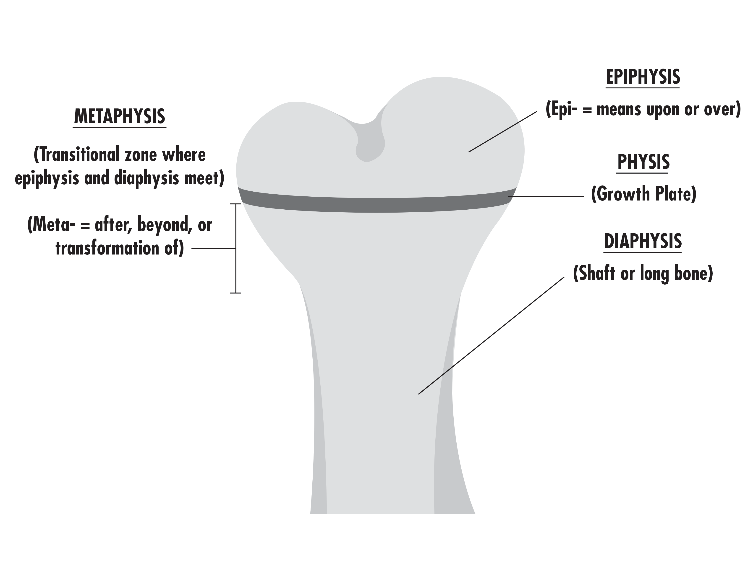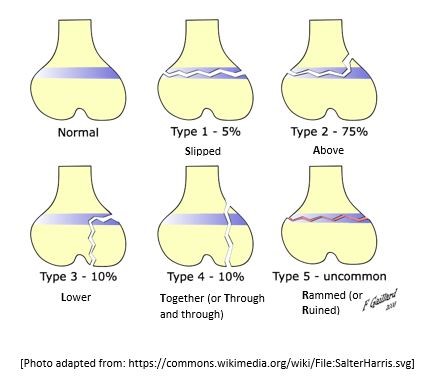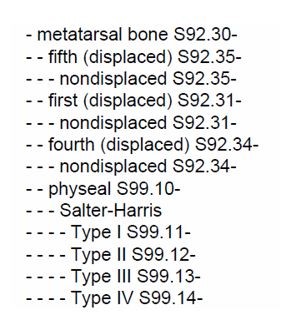Guest post: Clarifying recent ICD-10-CM Salter-Harris fracture coding advice
by Erica E. Remer, MD, FACEP, CCDS
I was recently reviewing Coding Clinic, First Quarter 2018, and felt that the question regarding physeal fractures needed more clarification and explanation than was provided in the official answer.
The question to Coding Clinic asked how to code a Salter-Harris type I physeal fracture of the third metatarsal bone of the left foot, and whether one or two codes were necessary to capture a single physeal fracture. The coder was confused by the Alphabetic Index and Tabular List instructions.
Coding Clinic responded by saying that a Salter-Harris fracture takes priority over coding a simple fracture because of future implications due to the involvement of the growth plate. Coding Clinic said that only one code is necessary to identify a single physeal fracture and that coders should assign code S99.112- (Salter-Harris Type I physeal fracture of left metatarsal), and should not assign a code from subcategory S92.33- (fracture of third metatarsal bone), as it is more important to capture the information that it is a physeal fracture.
Anatomy review
When reviewing this advice, I think it is important to note that you can only have a Salter-Harris fracture involving the physis (growth plate) in a growing bone, so they are unique to pediatrics. Once the bone is ossified (or a completely calcified bone), a Salter-Harris fracture is no longer possible.
Here is a diagram of the parts of the growing bone (see Fig. 1). Unfortunately, the etymological roots of the words in my picture work better with the orientation of the epiphysis up, as compared to the mnemonic of “SALTR” (see Fig. 2), where you orient the epiphysis on the bottom.

The physis is the growth plate, and the epiphysis is the end of the bone. The diaphysis is the shaft of the bone, and the metaphysis is the transitional zone between the epiphysis and the diaphysis, which includes the physis.

In general, the higher the number of the type of Salter-Harris fracture, the worse the prognosis is for the patient. Severe injury to the physis can result in growth arrest of the bone and lead to limb length discrepancies.
Analyzing the advice
The Coding Clinic question suggests that the Alphabetic Index and Tabular List instructions are confusing. Since I am a clinician with a limited understanding of coding, I can’t find the confusing point:

The reason why you do not assign an additional code from subcategory S92.33- isn’t because it is “more important to capture” the fact that it is a physeal fracture. It’s because the Salter-Harris classification of physeal fractures includes the injury to the physis and any concomitant involvement of metaphysis and/or epiphysis.
If the encoder asks you to code any additional fractures, it is wrong; there is no additional fracture regarding the Salter-Harris fracture. It would be redundant to code a Salter-Harris physis fracture of the left third metatarsal bone and a fracture, unspecified, of the left third metatarsal bone for the same fracture. It would be like coding Type 2 diabetes mellitus with diabetic nephropathy and Type 2 diabetes mellitus without complications in the same patient at the same encounter.
However, you might need a second code if there are other concomitant fractures to the same bone. For instance, if there was a proximal fracture of the base of the third metatarsal bone in addition to the physeal fracture, then you would need a second code for that noncontiguous fracture.
I hope this makes Salter-Harris fractures clearer. Happy coding!
Editor’s note: This article originally appeared in JustCoding. Dr. Remer is founder and president of Erica Remer, MD, Inc., Consulting Services. Contact her at icd10md@outlook.com. To read CDI Boot Camp Instructor Sharme Brodie, RN, CCDS’ advice on this topic, click here. Opinions expressed are that of the author and do not necessarily represent HCPro, ACDIS, or any of its subsidiaries.
